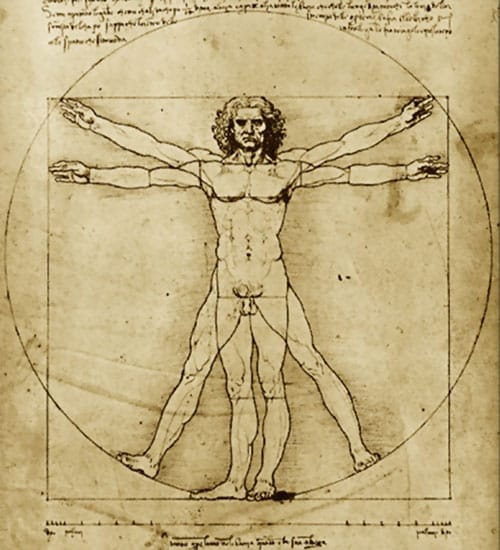The Vitruvian Man is a drawing created by Leonardo da Vinci circa 1490.(also called the Canon of Proportions or Proportions of Man). One of the things that made Leonardo da Vinci such a fantastic artist was his understanding of human anatomy.
His notes for The Vitruvian Man included:
- a palm is four fingers.
- a foot is four palms.
- a cubit is six palms.
- four cubits make a man.
- a pace is four cubits.
- a man is 24 palms.
- the length of the outspread arms is equal to the height of a man
- from the hairline to the bottom of the chin is one-tenth of the height of a man.
- from below the chin to the top of the head is one-eighth of the height of a man.
- from above the chest to the top of the head is one-sixth of the height of a man
- from above the chest to the hairline is one-seventh of the height of a man.
- the maximum width of the shoulders is a quarter of the height of a man.
- from the breasts to the top of the head is a quarter of the height of a man.
- the distance from the elbow to the tip of the hand is a quarter of the height of a man.
- the distance from the elbow to the armpit is one-eighth of the height of a man.
- the length of the hand is one-tenth of the height of a man.
- the root of the penis is at half the height of a man.
- the foot is one-seventh of the height of a man.
- from below the foot to below the knee is a quarter of the height of a man.
- from below the knee to the root of the penis is a quarter of the height of a man.
- the distances from below the chin to the nose and the eyebrows and the hairline are equal to the ears and to one-third of the face.




